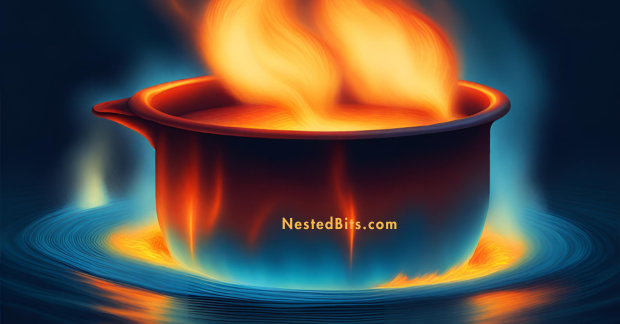Chances are that you’ve been warned by parents or grandparents to never pour water into a boiling pan of oil. But why? Because a literal fireball might pop up and burn down your house. So please never do that. It’s not worth the risk. Please never try this at home or anywhere. To understand why I’m emphasizing it that much, watch the below video to see what happens.
This phenomenon is based on some fascinating scientific principles. First, let us discuss what happens to water and oil separately before they contact one another. Oil is a non-polar liquid, which means it does not mix well with water due to its different molecular structures. Water, on the other hand, is a polar liquid made up of hydrogen and oxygen atoms that are attracted to one another through intermolecular forces known as hydrogen bonds.
When you pour cold water into hot oil, several things occur simultaneously:
Learn how the Pomodoro Technique can Increase Productivity
- Heat Transfer: The primary reason for the fireball formation occurs due to heat transfer from the oil to the water droplets. As a result of this temperature difference between the two substances, vapor bubbles begin to form around each water drop in the hot oil. This process is referred to as nucleate boiling.
- Vapor Formation: The heat causes the water molecules within the drops to gain enough energy and turn into steam or gas. As these vapor bubbles expand, they trap a small amount of oil with them when they form at the interface between the two liquids. These tiny pockets of both liquid (water) and gas (steam), collectively called microdroplets, are suspended in the hot oil.
- Ignition: The ignitable mixture is created once these microdroplets containing a significant amount of oil get released into the air above the surface when they reach their maximum size. This vapor-oil mist rises and mixes with oxygen from the surrounding atmosphere, making it susceptible to combustion or catching fire if an open flame is present.
- Combustion: The ignition occurs only in the presence of a spark (from the stove burner) that provides enough energy for the vapor-oil mixture to undergo complete combustion and release heat, which we perceive as flames. This process continues until all the fuel is burned or the oxygen source is removed.
If you’re feeling now like “Nah, that seems too complex to read and understand. Can’t you explain it to me like I’m Five years old ?” Sure. Here’s how it works: The water gets very hot from the oil and turns into steam. When tiny bubbles of steam pop up around each drop, they bring a little bit of oil with them. These mixture drops then rise to make something called fuel for fire in the presence of a spark (from the stove burner).























